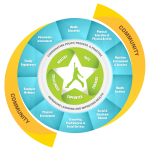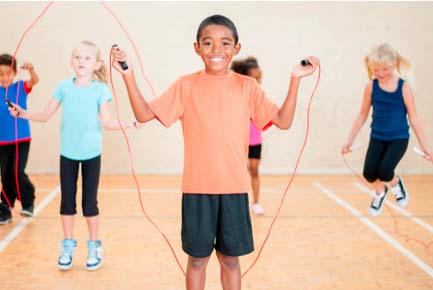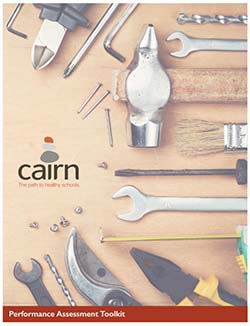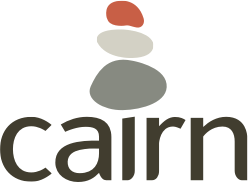Other Publications & Resources
Culturally Responsive Health Education Checklist
Skills-Based Health Education Unit: High School, Health II: Accessing Valid and Reliable Resources
Supporting the Whole Child During a Pandemic Response
A Systems Approach to Integrating Health Education
The Opioid Crisis and the Role of Health Education and Physical Education
Health Education Performance Assessment Toolkit
10 Key Pieces to Creating Sustainable School Health Initiatives


Supporting the Whole Child During a Pandemic Response
This document was created by Cairn Guidance in partnership with NYC Department of Health and Mental Hygiene and NYC Department of Education’s Office of School Wellness Programs.
The changing landscape for school planning during a global pandemic calls for an unprecedented level of collaboration and coordination in school communities to best serve students’ health and academic needs. Districts are working hard to assess the changing landscape of what the day to day of their school community looks like during a global pandemic and with regard to social justice and racial equity. Districts are considering ways to support their staff, students and family communities, how to provide academic support their staff, students and family communities, continue to provide academic support in a rigorous way and ensure all students are getting what they need to thrive; whether that means access to meals, access to the internet or social/emotional learning opportunities.
This toolkit includes ten documents that align to the Whole School, Whole Community, Whole Child (WSCC) Framework to ensure a comprehensive approach and emphasizes the need for collaboration and coordination of people, policy and practice in a school to support the whole child. If you are unfamiliar with this framework, we encourage you to learn more by visiting ASCD’s website. The resource is unique because it demonstrates how integrating a systems-thinking approach to efforts to support students, staff, and the broader community ensures that all components are working together towards a common goal of thriving, healthy students.
You can access the toolkit here.

A Systems Approach to Integrated Health Education
Cairn Guidance was contracted to write this publication for the Robert Wood Johnson Foundation.
Students who are healthy, present, and engaged learn better. At the same time, those with more education tend to live longer, healthier, and more productive lives. In short, the relationship between health and education is reciprocal: higher education has been found to improve health, and better health supports learning. But despite these connections the education and health sectors have largely worked separately.
Key Findings
- A systems approach is needed to better integrate health and education.
- There are many policy avenues for doing so, including the Every Student Succeeds Act, and the Child Nutrition and WIC Reauthorization Act at the federal level, as well as myriad state policies.
- The Whole School, Whole Community, Whole Child model can help build a shared framework for health and education leaders.
- To build a true systems approach, we will need to confront challenges and opportunities related to operations, quality, and implementation
This publication is located here.

The Opioid Crisis and the Role of Health Education and Physical Education
Director Jessica Lawrence co-wrote this article with Kevin Lorson, Mary Huber, Leslie Neyland-Brown and Josh Francis for FutureFocus, OAHPERD’s biannual publication.
The opioid crisis impacts our students, families, schools and communities with, not only the number of unintentional overdose deaths, but also the trauma associated with drug abuse. Health and physical education teachers are on the front lines of the schools’ responses to the opioid crisis by providing quality curriculum focused on skill-building; assisting in the development of the schools’ prevention plan; and helping connect school and community prevention resources. Teachers play a role by supporting students experiencing trauma, serving as a trusted adult who can recognize, reach out and refer services to support students.
The purpose of this article is to overview the role of educators and schools in supporting students developing resiliency skills and health literacy using the Whole School, Whole Community, Whole Child (WSCC) model.
This publication is located here.
The key to building a healthy and physically active future for our youth needs to be grounded in efforts that focus on developing the skills to demonstrate healthy behaviors.

Health Education Performance Assessment Toolkit
For fifteen years, Cain Guidance has been training and offering professional development to health educators and teachers that are tasked to teach health education. Cairn’s two-day Skills Based Health Education Standards, Instruction and Assessment Training brings teachers through a journey of foundations of health education (effective practices, data, policy & standards), to development of a data-informed unit plan and well-developed, authentic performance assessment. No-cost resources, tools and templates are shared throughout the two days, and over twenty teaching strategies are modeled. This toolkit is one of the resources shared during the second day of the training to assist with writing well-developed performance assessments.
This toolkit includes a step by step process to develop K-12 performance assessments as well as resources to aid students in producing meaningful, authentic products or performances that showcase their knowledge and skill attainment.
To access the toolkit, click here.
10 Key Pieces to Creating Sustainable School Health Initiatives
This document describes the ten pieces that schools and districts might consider when working to create long-lasting school health programs and initiatives.
